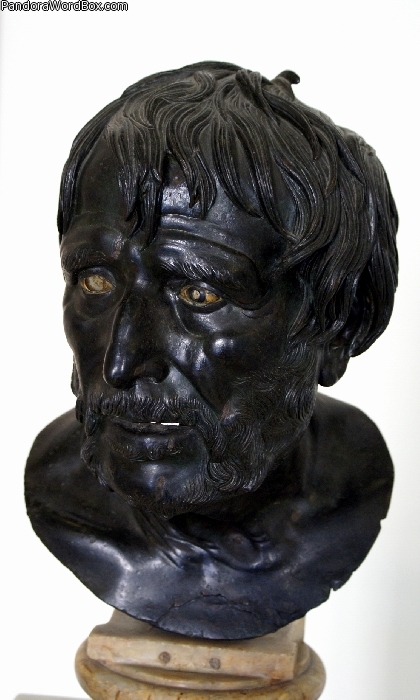Our websites offer information mostly for educational purposes with no intent to alter health care protocols nor to serve as a sole source of medical information.
Always seek the advice of your local health care provider.
|
× UKRAINIAN CHILDREN WITH DISABILITIES HAVE SPECIAL NEEDS |
ww

"Pseudo Seneca or Unkown Poet " (see related A | B), 2-3 BC Original from Herculeum Museo Archeologico Nazionale di Napoli, Naples, Italy
Many authorities believe this Roman bust does not represent Seneca, which led to its common name as "Pseudo-Seneca". This work was discovered in 1754 at Herculaneum and it represents one of the finest examples of the crafts of the time. Note that Seneca committed suicide in 65 AD and the Vesuvius eruption that destroyed the area was in 79 AD. In 1813 a herm of Seneca (see related Image) suggested that this work represented any number of famous persons, including Lucretius, Euripides or Hesiod, among others.
Lucius Annaeus Seneca (4 BC - 65 AD), known as "the Younger" (his father was a rhetorician), studied Stoic philosophy with Attalos and Sotion. He settled in Rome in 31 AD and developed conflicts with emperors Caligula and Claudius. Seneca was exiled during which wrote the "Consolations". In 49 he was recalled to tutor the future Emperor Nero. Seneca gained influence, but with time it declined, and in 65 AD Nero ordered that he kill himself by opening his veins. His wife Pompeia Paulina tried to do likewise but was saved by orders from Nero (according to Tacitus). Seneca became popular among emerging Christians as reflected by the choice of Dante to place Seneca in the First Circle of Hell or Limbo, the destination of good non-Christians and infants who lack the "grace" that only Christ can give. Note companion images with additional comments.
20201217 ww
|








